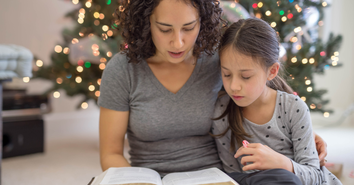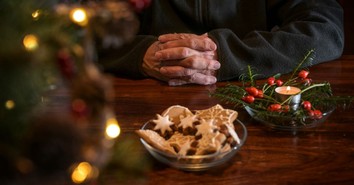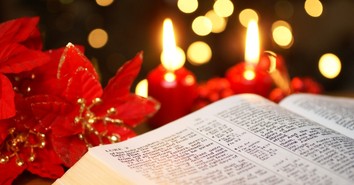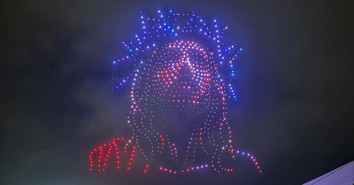Keepers of the Light: A Unit Study on Lighthouses
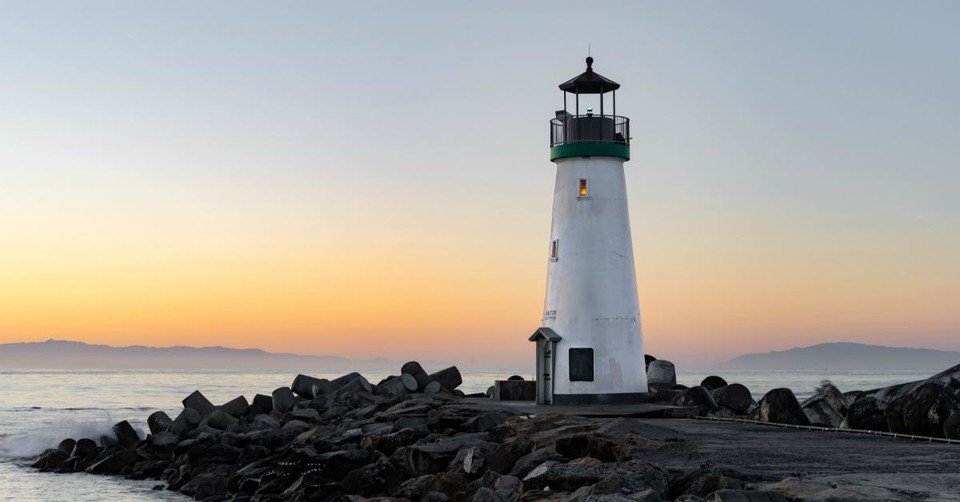
"We need to start sounding the foghorn," Mark instructed his son.
"I'll do it, Father, while you keep the lamp burning," Andrew said as he shrugged into his rain slicker.
Andrew scurried down the 180 steps. He did not take time to count them as usual. He knew that timeliness was crucial when weather like this persisted. He hurried into the shed where the foghorn was housed. He began to crank the handle to sound it when he glanced up and saw his sister approaching.
"ANDREW!" Abigail screamed.
"I'm right here!" he called.
She arrived breathless and soaking wet. Her chest heaved as she tried to catch a breath. "There's a ship that has run aground on the rocks. We need to get the boat and Papa and hurry!"
Minutes later the three jumped into the boat and pushed off from shore. Abigail held the lantern while her father and brother hurriedly rowed to where she had seen the ship. The rocks and rough seas were swiftly demolishing the vessel. She listened carefully as her eyes intently searched the wreckage, looking for survivors.
"Over there," Abigail pointed.
Her father grunted as he and Mark struggled to pull the young man into their boat. The waves threatened to capsize them. Thunder crashed as lightning illuminated the rolling sea.
"There's another one!" Abigail said.
Their eyes scanned the choppy water, looking for signs of life. Lightning continued to flash, revealing debris but nothing more.
They were all soaked and exhausted by the time they returned to the lighthouse. Despite Mark's weariness, he headed up the stairs to check on the lamp. It was crucial to keep the light burning brightly so that further catastrophes could be avoided.
The history of lighthouses is exciting to study. The very first was the Lighthouse of Alexandria, completed in 283 BC. It was considered one of the Seven Wonders of the Ancient World. Lighthouse keepers thought of their position as a calling instead of a job, taking great pride in their work. Most keepers lived on remote islands, with very little interaction with other people. It was not a job for the fainthearted, requiring discipline, precision, and repetition. Keepers had to be prepared for adverse weather conditions, and at times, sea rescues. Let's set sail on a journey to learn about lighthouses in history.
Vocabulary
Lighthouse, Fresnel lens, kerosene, fog signal, Alexandria, daymarks, prisms, shipwreck, lifesaving, lantern.
Bible Memorization
"Ye are the light of the world. A city that is set on an hill cannot be hid. Neither do men light a candle, and put it under a bushel, but on a candlestick; and it giveth light unto all that are in the house. Let your light so shine before men, that they may see your good works, and glorify your Father which is in heaven." Matthew 5:14-16
"No man, when he hath lighted a candle, covereth it with a vessel, or putteth it under a bed; but setteth it on a candlestick, that they which enter in may see the light." Luke 8:16
English
Lighthouse keepers kept a daily logbook. Some used the log to record nature they observed; others included short stories they had written. Create your own lighthouse keeper diary over the next month.
In 1876, Traveling Library Boxes were sent among lighthouse keepers in America. They contained various reading materials passed among workers and their families. Each box was numbered. Work with another family to organize your own boxes, and then exchange them.
Augustine-Jean Fresnel was the French creator of the Fresnel lens. His invention was crucial to lighthouse history. Find out as much as you can about this man and his lens, and report your findings to your family.
Pretend you and your family are lighthouse keepers, living on a remote island. Write a story about your experiences.
Science
Research how the Fresnel lens worked. Draw a picture of it and label the components.
Lighthouse keepers had to keep a critical watch on the weather. Keep a two-week record of temperatures and conditions. Record them in your lighthouse logbook.
Read books about various types of sea life. Write about these in your daily log. Draw pictures of each creature.
Find out what different kinds of fuel were used in lighthouses. Tell your family about the things you discovered.
The Fresnel lens is made out of a series of prisms. Research prisms.
Lighthouse keepers had to know how to tie many kinds of knots. Find a book about knots and learn how to tie four different ones.
History
The Lighthouse of Alexandria was considered to be one of the Seven Wonders of the Ancient World. Research and discover what the other six wonders were. Learn what you can about this first lighthouse.
Check out library books on American lighthouses. Find out which one is the oldest. Which is the tallest? Where are they located? Are any still in working order?
Lighthouses are not unique to the United States but are found in many different countries. Find information about lighthouses from five other countries. Discover what you can about each one. Draw pictures of each one, including a flag of the country.
Research the history of lighthouses.
Health
Lighthouse keepers had to know the art of saving lives. Research the importance of water safety and how to rescue people in the water.
Learn about CPR.
Learn what types of sea life can be eaten. Is any seaweed edible?
Lighthouse keepers lived in remote areas and often did not have access to medical help. Research a common ailment and figure out what things they could use to promote healing. How would they have handled various cuts? Research first aid for a specific time period.
Math
If you were paid $225 a year for lighthouse keeping, how much would you earn each month, week, day?
You and your family are given 25 stacks of wood to help keep you warm during the winter months. If you need fuel for five months out of the year, how many stacks would you use per month?
Lighthouse keepers had to be awake from dusk to dawn to make sure the light was burning brightly. Find out when the sun sets and rises in your area. How many hours and minutes would you need to be awake?
Foghorns were used in addition to lighthouses to warn ships of potential danger when the weather conditions were foggy. If a foghorn is blown on average every fifteen seconds, how many times would it be sounded if fog persists for five hours?
If you burn five gallons of kerosene every hour to keep the light lit, how much fuel would be used from 6 PM until 7 AM?
Art
The different colors and patterns on lighthouses are called daymarks. Each one is different so that sea vessels are able to distinguish where they are during the day time by viewing them. Draw a lighthouse and create your own daymarks.
Lighthouses came in all shapes and sizes. Read some books that document different ones, and then draw your rendition of one.
Shipwrecks were common before the advent of lighthouses. Draw a picture of a shipwreck and a lighthouse keeper rescuing passengers.
Keeping the lighthouse painted, whitewashed, cleaned, polished, and gleaming was also the job of lighthouse keepers. Paint a picture related to this job.
Jodie Wolfe and her husband have been married for twenty years. They have been homeschooling their two sons for twelve years. Jodie likes reading, writing and leading ladies Bible studies. She also enjoys encouraging women through her blog, Digging For Pearls at https://diggingforpearls.blogspot.com
This article was originally published in the Jul/Aug 2010 issue of Home School Enrichment Magazine. Sign up now to receive a FREE sample copy! Just click here: https://homeschoolenrichment.com/magazine/request-sample-issue.html
Photo Credit: ©Unsplash-Paulius-Dragunas
Originally published July 21, 2010.


